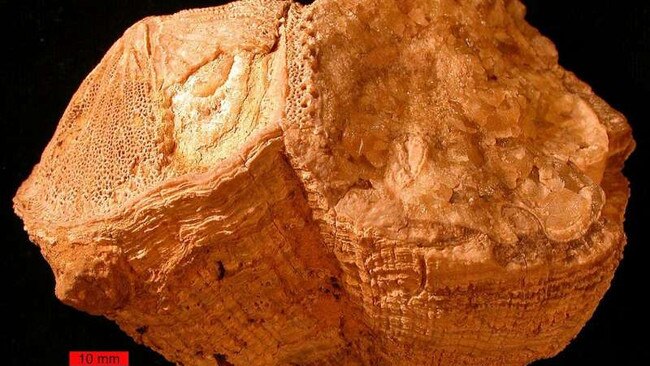Ancient clam shows how the days are getting longer
An ancient mollusc has revealed how, 70 million years ago, a day lasted only 23½ hours.

An ancient mollusc has revealed how, 70 million years ago, a day lasted only 23½ hours.
Analysis of a fossilised clam shell has provided a newly accurate measure of how quickly the Earth turned on its axis during the late Cretaceous period.
During these last days of the dinosaurs our world rotated 372 times a year, compared with the present 365, a study suggests. This would have made each day about half an hour shorter.
Researchers at Vrije University in Brussels were able to deduce this because the mollusc grew rapidly, laying down a growth ring each day. Examining these layers at a microscopic level, they were able to uncover detailed evidence of how environmental conditions changed around the mollusc — both from hour to hour and from season to season.
“We have about four to five datapoints per day, and this is something that you almost never get in geological history. We can basically look at a day 70 million years ago. It’s pretty amazing,” Niels de Winter, an analytical geochemist at the university and the lead author of the study, said.
The study, which was published in the journal Paleoceanography and Paleoclimatology, looked at a single mollusc that lived for more than nine years in a shallow sea bed in what was then the tropics — a location that is now, 70 million years later, dry land in the mountains of Oman.
The researchers used lasers to count its daily growth rings more accurately. These rings then allowed them to determine the number of days in a year and more accurately calculate the length of a late Cretaceous day. The length of a year remains constant because Earth’s orbit around the Sun does not change. However, the length of a day has been growing steadily longer as friction from ocean tides, caused by the moon’s gravity, slows the rotation of the Earth.
This means the mollusc data could help to augment our understanding of the moon’s history. As the Earth’s spin slows, the moon is creeping away by about 2.5cm a year. However, the moon could not have been receding at this rate since its creation. If it had been, it would have been inside the Earth a mere 1.4 billion years ago.
Scientists know from other evidence that it has existed longer and was probably formed 4.5 billion years ago. This means the rate at which the moon is moving away from the Earth has changed and the researchers hope that more precise data about the length of a day in the distant past will add to our understanding of interactions between the moon and Earth.
The most widely accepted theory proposes that the moon formed during a collision between the Earth and another small planet about the size of Mars. The debris is thought to have collected in an orbit around Earth.
● A joint mission between Europe and Russia to send a rover to Mars has been postponed for two years after engineers failed to make a deadline dictated by the alignment of the planets. The rover, named after the British chemist Rosalind Franklin, has been designed to hunt for signs of life, either past or present, by drilling 2m beneath the surface to see if life could have survived shielded from the planet’s radiation.
The project, which has been hit by setbacks, will hopefully lead to a launch in 2022 and a landing on Mars in 2023.
The Times



To join the conversation, please log in. Don't have an account? Register
Join the conversation, you are commenting as Logout